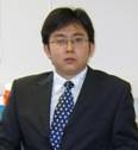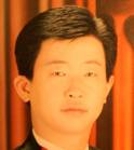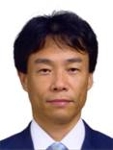We are currently preparing following tutorials:
Resource Allocation in Wireless Device-to-Device Communications
Monday, 12 August • 8:30 – 10:30
Chairs:
Guang Shi (CIC), Ruonan Zhang (Northwestern Polytechnical University)
Instructor(s):
Lingyang Song (Peking University), Zhu Han (University of Houston)
Abstract:
Mobile data traffic has dramatically increased in recent years with the emergence of smart phones, tablets, and various new applications. It is hence crucial to increase network capacity to accommodate these bandwidth consuming applications and services. Device-to-Device (D2D) communication is a promising concept to improve user experiences and resource utilization in cellular networks, both for licensed and unlicensed spectrum. However, design, analysis, and optimization of D2D communication networks require multidisciplinary knowledge, such as wireless communication and networking, signal processing, artificial intelligence (e.g., for learning), decision theory, optimization, and economic theory. In this tutorial, we will discuss the use of resource allocation tools (such as game theory) to analyze and design D2D communication networks. Specifically for distributed solutions, the tutorial will cover a wide aspect from non-cooperative to cooperative game, including Stackelberg-type game, coalition game, auction theory, etc. The tutorial will provides a systematic overview of the foundations and recent developments of this promising technology, in particular from radio resources utilization point of view based on game theory, and summarizes the current state of the art of the theory, key strategies and techniques.
Outline:
- Basic of D2D Communications – presents the basics and recent progress in applying signal processing techniques to design D2D communications and networks.
- Overview
- Signal and interference model
- Mode selection
- Power control
- Interference-aware beamforming
- Resource Allocation and Game Theory– discusses the use of distributed resource allocation such as game theory to analyze and design wireless networks with D2D considerations.
- Non-cooperative and cooperative game
- Distributed auction game
- Coalition game
- Subcarrier allocation
- Time-domain scheduling
- Energy efficient improvement
Biography of the instructor(s):

Lingyang Song,
Professor of Wireless Communications and Signal Processing
School of Electrical Engineering and Computer Science
Peking University, Beijing, China 100871
Tel: +86 (0) 10 62763131
Email: lingyang.song@pku.edu.cn
Website: http://wireless.pku.edu.cn/home/songly/
Lingyang Song received his PhD from the University of York, UK, in 2007, where he received the K. M. Stott Prize for excellent research. He worked as a postdoctoral research fellow at the University of Oslo, Norway, and Harvard University, until rejoining Philips Research UK in March 2008. In May 2009, he joined the School of Electronics Engineering and Computer Science, Peking University, China, as a full professor. His main research interests include MIMO, OFDM, cooperative communications, cognitive radio, physical layer security, game theory, and wireless ad hoc/sensor networks. He is co-inventor of a number of patents (standard contributions), and author or co-author of over 100 journal and conference papers. He received the best paper award in IEEE International Conference on Wireless Communications, Networking and Mobile Computing (WiCOM 2007), the best paper award in the First IEEE International Conference on Communications in China (ICCC 2012), the best student paper award in the7th International Conference on Communications and Networking in China (ChinaCom2012), and the best paper award in IEEE Wireless Communication and Networking Conference (WCNC2012).
Dr. Song is an Associate Editor of IEEE Transactions on Wireless Communications since 2012.He is the recipient of 2012 IEEE Asia Pacific (AP) Young Researcher Award, and 2012 National Science Foundation of China (NSFC) Outstanding Young Investigator Award. He is a senior member of IEEE.

Zhu Han,
Associate Professor,
Department of Electrical and Computer Engineering,
N308 Engineering Building I
University of Houston
Houston, TX 77004 USA
Tel: +1-713-743-4437, Fax: +1-713-743-4444
Email: zhan2@uh.edu
Website: http://www2.egr.uh.edu/~zhan2/
Zhu Han received the B.S. degree in electronic engineering from Tsinghua University, in 1997, and the M.S. and Ph.D. degrees in electrical engineering from the University of Maryland, College Park, in 1999 and 2003, respectively. From 2000 to 2002, he was an R&D Engineer of JDSU, Germantown, Maryland. From 2003 to 2006, he was a Research Associate at the University of Maryland. From 2006 to 2008, he was an assistant professor in Boise State University, Idaho. Currently, he is an Assistant Professor in Electrical and Computer Engineering Department at University of Houston, Texas. His research interests include wireless resource allocation and management, wireless communications and networking, game theory, wireless multimedia, and security.
Dr. Han is an NSF CAREER award recipient 2010. Dr. Han is an Associate Editor of IEEE Transactions on Wireless Communications since 2010. Dr. Han is the winner of the 2011 IEEE Communications Society Fred W. Ellersick Prize. Dr. Han is the coauthor for the papers that won the 7 best paper awards in IEEE International Conferences.
Trends and Issues toward Future Carrier-Grade Networks
Monday, 12 August • 14:00 – 15:00
Chairs:
Xinsheng Zhang (VP & Secretary General of CIC), Yang Yang (WiCO, Shanghai)
Instructor(s):
Koichi Asatani (Kogakuin University)
Abstract:
Carrier-grade networks for the future are being developed as Next Generation Networks (NGN). The NGN is a converged solution after the legacy telecom networks by enabling QoS management and controls in IP network like in legacy telecom networks and by supporting economical, versatile multi-media applications like those on the Internet. NGN supports voice, Internet services and further services which are being and will be developed in the future with flexible and cost effective manners and with high dependability and high security. It also supports third-party applications through the open interface. NGN also provides more flexible access arrangements such as fixed-mobile convergence (FMC) with generalized mobility, and horizontal and vertical roaming as well as improved security.
The concepts and architecture of NGN are described. The current status of NGN implementation in a commercial offer in Japan is touched upon. Issues for the global evolution of NGN are also described, such as IPv6 related issues, impacts of smartphones, cloud computing, global standards and regulations.
Biography of the instructor(s):

Koichi Asatani,
Professor,
Department of Computer Science and Communications,
Kogakuin University, Tokyo, Japan
Koichi Asatani received his B.E.E.E., M.E.E.E. and Ph. D degrees from KyotoUniversity in 1969, 1971 and 1974, respectively. From 1974 to 1997, Dr. Asatani was engaged in R&D on optical fiber communication systems, hi-definition video transmission systems, FTTH, ISDN, B-ISDN, ATM networks, IP networks and their strategic planning in NTT. Currently he is Dean, Department of Computer Science and Communications Engineering, KogakuinUniversity, and a visiting professor, Graduate School of Global Information and Telecommunication, WasedaUniversity, both in Tokyo, Japan. He is a Fellow of IEEE and a Fellow of IEICE. He was appointed as a distinguished lecturer of IEEE Com Soc for 2007-2009, 2011-2014.
He is a founder of Communications QoS, Reliability and Performance Modeling series symposium at ICCs and Globecoms. He served as co-chair for this symposium series at ICCs and Globecoms for 2002-2004.He is Ex-Chair and Advisory Board Ex-Chair Emeritus of IEEE Technical Committee on Communication Quality and Reliability (CQR-TC), Feature Editor on Standards (1993-1999), Senior Technical Editor/Technical Editor (1999- 2010) of IEEE Communications Magazine, and Technical Editor on Broadband Technology of IEEE Communications Survey. He served as Executive Chair for ICC2011 in Kyoto, Japan.
He gave keynotes and invited talks at many major international conferences. As an IEEE Com Soc distinguished lecturer, he gave invited lectures at many universities and industries such as Illinois Institute of Technology, Verizon, AT&T Laboratory, Hawaii University in USA, Milan Polytechnic in Italy, Technical University of Lisbon in Portugal, Technical University of Valencia in Spain and Haute Alsace University in France, Indian Institute of Technology Hyderabad, Indian Institute of Science, Pune College of Engineering in India, University of Queensland, The Australian National University, Telstra in Australia, University of Canterbury, Auckland University of Technology in New Zealand. He also gave anintensive course lecture on Network Architecture and Modeling toward Future Carrier-Grade Networks including NGN at University of Pisa.
From 1988 through 2000, he served as Vice-Chairman of ITU-T SG 13 (formerly CCITT SG XVIII), responsible for digital networks including GII, IP networks and NGN.He is serving as Chair for National Committee on Next Generation Networks inJapan, as Chair, R&D and Standardizations Working Group, Next Generation IP Network Promotion Forum, and as a board member of New Generation Network Promotion Forum.
He has published more than fifty papers, and gave more than seventy talks including keynotes、 invited talks and tutorials at international conferences such as ICCs and Globecoms. He is author or co-author of nineteen books including "Quality and Performance Designs of Telecommunication Networks"(IEICE, 1993, in Japanese), "Introductions to ATM Networks and B-ISDN)" (John Wiley and Sons, 1997), "Multimedia Communications Networks - Technologies and Services" (Artech House, 1998), "Multimedia Communications" (Academic Press, 2001), "Information and Communication Technology and Standards" (Denki Tsushin Shinko Kyokai, in Japanese, 2006), "Introduction to Information Networks-Fundamentals of Telecom & Internet Convergence, QoS, VoIP and NGN-" (Corona-sha Publishing Inc., in Japanese, 2007), and Handbook of Enterprise Integration (CRC Press, 2009). His current interests are Information Networks and Network Architectures including Broadband networking, Internetworking, IP telephony, NGN, Future Networks and their QoS aspects.
Smart Grid: Research Trend and Future Perspective
Monday, 12 August • 16:20 – 17:20
Chairs:
Xinsheng Zhang (VP & Secretary General of CIC), Yang Yang (WiCO, Shanghai)
Instructor(s):
Nei Kato (Tohoku University)
Abstract:
Smart grid has emerged as a promising technology for enabling bi-directional communication between the power company and its users to facilitate intelligent, robust, and resilient next generation power grid systems. In this tutorial, we first give a brief description of the building blocks of the power distribution system typically considered for smart grid. Then, we describe the communication model of smart grid. The remainder of the tutorial includes several important topics of smart grid research including machine-to-machine communication, integration of renewable energy sources, demand side management, and security. Some example projects are also described to indicate the challenges of smart grid and the ongoing research trend to effectively address these challenges. Finally, future research perspectives are presented.
Biography of the instructor(s):

Nei Kato,
Professor
Graduate School of Information Sciences,
Tohoku University,
Aoba 09, Aramaki, Aoba-ku, Sendai, Japan.
Tel:+81+22-795-6161
Email:kato@it.ecei.tohoku.ac.jp
Website:http://www.it.ecei.tohoku.ac.jp/~kato/en-index.html
Nei Kato(A’03–M’04–SM’05-F’13) received his Bachelor Degree from Polytechnic University, Japan in 1986, M.S. and Ph.D. Degrees in information engineering from Tohoku University, Japan, in 1988 and 1991, respectively. He joined Computer Center of Tohoku University at 1991, and has been a full professor with the Graduate School of Information Sciences since 2003. He became Special Assistant to the President of Tohoku University since 2013. He has been engaged in research on satellite communications, computer networking, wireless mobile communications, smart grid, image processing, and pattern recognition. He has published more than 300 papers in peer-reviewed journals and conference proceedings. He currently serves as the Vice Chair of IEEE Ad Hoc & Sensor Networks Technical Committee, the Chair of IEEE ComSoc Sendai Chapter, the steering committee member of WCNC and a voting member of GITC, an editor of IEEE Wireless Communications(2006-), IEEE Wireless Communications(2006-), IEEE Network Magazine(2012-), IEEE Transactions on Wireless Communications(2008-), IEEE Transactions on Vehicular Technology(2010-), and IEEE Trans. on Parallel and Distributed Systems(TPDS). From 2013, he also serves as an Associate Editor-in-Chief of TPDS. He has served as the Chair of IEEE Satellite and Space Communications Technical Committee(2010-2012), the Chair of IEICE Satellite Communications Technical Committee(2011-2012), guest-editor of many IEEE transactions/journals/magazines, a symposium co-chair of GLOBECOM’07, ICC’10, ICC’11, ICC’12, Vice Chair of IEEE WCNC’10, WCNC’11, ChinaCom’08, ChinaCom’09, Symposia co-chair of GLOBECOM’12, TPC Vice chair of ICC’14, and workshop co-chair of VTC2010. His awards include Minoru Ishida Foundation Research Encouragement Prize(2003), Distinguished Contributions to Satellite Communications Award from the IEEE Communications Society, Satellite and Space Communications Technical Committee(2005), the FUNAI information Science Award(2007), the TELCOM System Technology Award from Foundation for Electrical Communications Diffusion(2008), the IEICE Network System Research Award(2009), the IEICE Satellite Communications Research Award(2011), the KDDI Foundation Excellent Research Award(2012), IEICE Communications Society Distinguished Service Award(2012), IEEE GLOBECOM/WCNC/VTC Best Paper Awards, and IEICE Communications Society Best Paper Award(2012). Besides his academic activities, he also serves on the expert committee of Telecommunications Council, Ministry of Internal Affairs and Communications, and as the chairperson of ITU-R SG4 and SG7, Japan. Nei Kato is a Distinguished Lecturer of IEEE Communications Society(2012-2014) and the co-PI of A3 Foresight Program(2011-2014) funded by Japan Society for the Promotion of Sciences(JSPS), NSFC of China, and NRF of Korea. He is a fellow of IEEE and IEICE.
Smart Grid: Research Trend and Future Perspective









